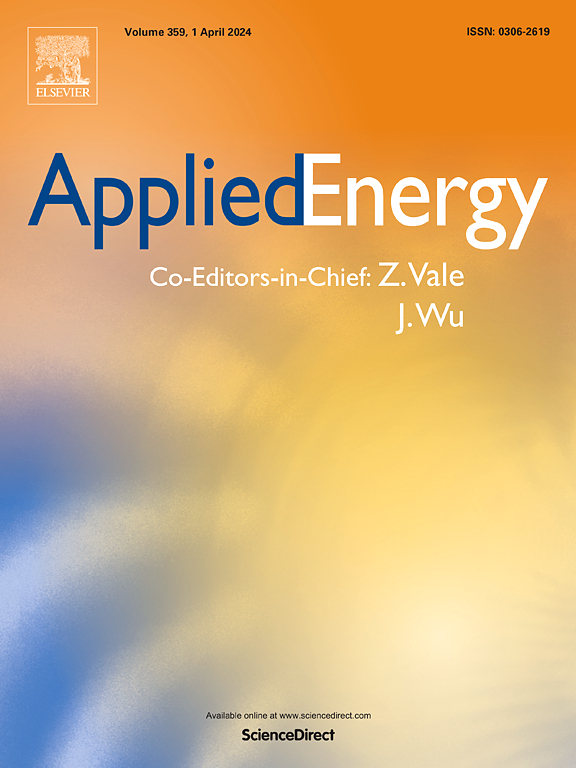Optimizing agrivoltaic systems: A comprehensive analysis of design, crop productivity and energy performance in open-field configurations
IF 10.1
1区 工程技术
Q1 ENERGY & FUELS
引用次数: 0
Abstract
The rapid expansion of photovoltaic (PV) systems is essential for decarbonizing energy systems but raises concerns about competing with agriculture for arable land. Agrivoltaic (APV) systems offer a sustainable solution by integrating PV installations with agriculture on the same land. However, adoption is constrained by a limited understanding of design parameters and their effects on energy and crop productivity. This study presents a simulation framework to evaluate open-field APV systems, focusing on the impacts of ground coverage ratio (GCR), clearance height, and tracking configurations on solar irradiance distribution, crop yield, and solar energy generation. The Land Equivalent Ratio (LER) was employed to assess the combined productivity of agricultural output and solar energy generation. Scenarios are modeled for temperate climates, examining three crops (lettuce, turnip, and maize) alongside bifacial PV systems with fixed and tracking designs. Results showed that design parameters significantly affect shading and light distribution. Higher clearance heights and lower GCRs enhance agricultural productivity, particularly for shade-sensitive crops like maize, though slightly reducing energy yields. LER values ranged from 1.04 to 2.05 for the GCR variable between 0.6 and 0.2, demonstrating that APV systems are more productive than conventional land use. These insights support optimizing APV designs, aiding policymakers and developers in aligning renewable energy goals with agricultural sustainability.
求助全文
约1分钟内获得全文
求助全文
来源期刊

Applied Energy
工程技术-工程:化工
CiteScore
21.20
自引率
10.70%
发文量
1830
审稿时长
41 days
期刊介绍:
Applied Energy serves as a platform for sharing innovations, research, development, and demonstrations in energy conversion, conservation, and sustainable energy systems. The journal covers topics such as optimal energy resource use, environmental pollutant mitigation, and energy process analysis. It welcomes original papers, review articles, technical notes, and letters to the editor. Authors are encouraged to submit manuscripts that bridge the gap between research, development, and implementation. The journal addresses a wide spectrum of topics, including fossil and renewable energy technologies, energy economics, and environmental impacts. Applied Energy also explores modeling and forecasting, conservation strategies, and the social and economic implications of energy policies, including climate change mitigation. It is complemented by the open-access journal Advances in Applied Energy.
 求助内容:
求助内容: 应助结果提醒方式:
应助结果提醒方式:


